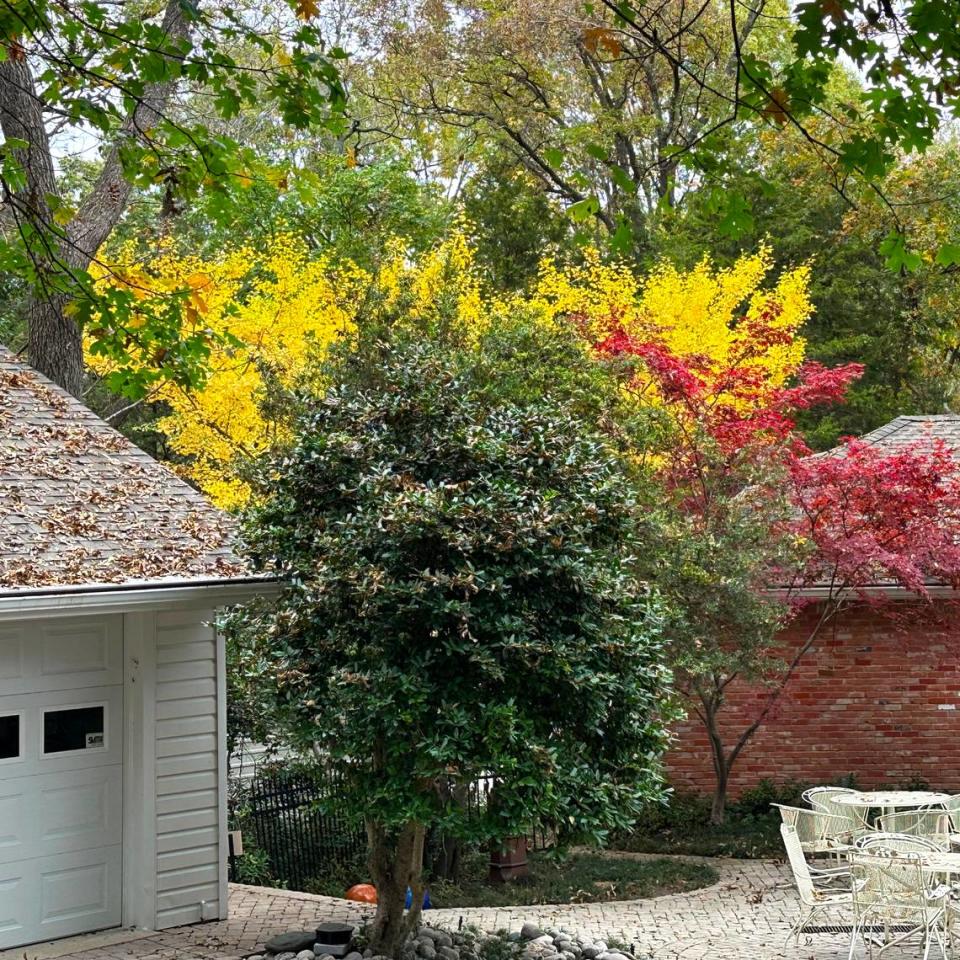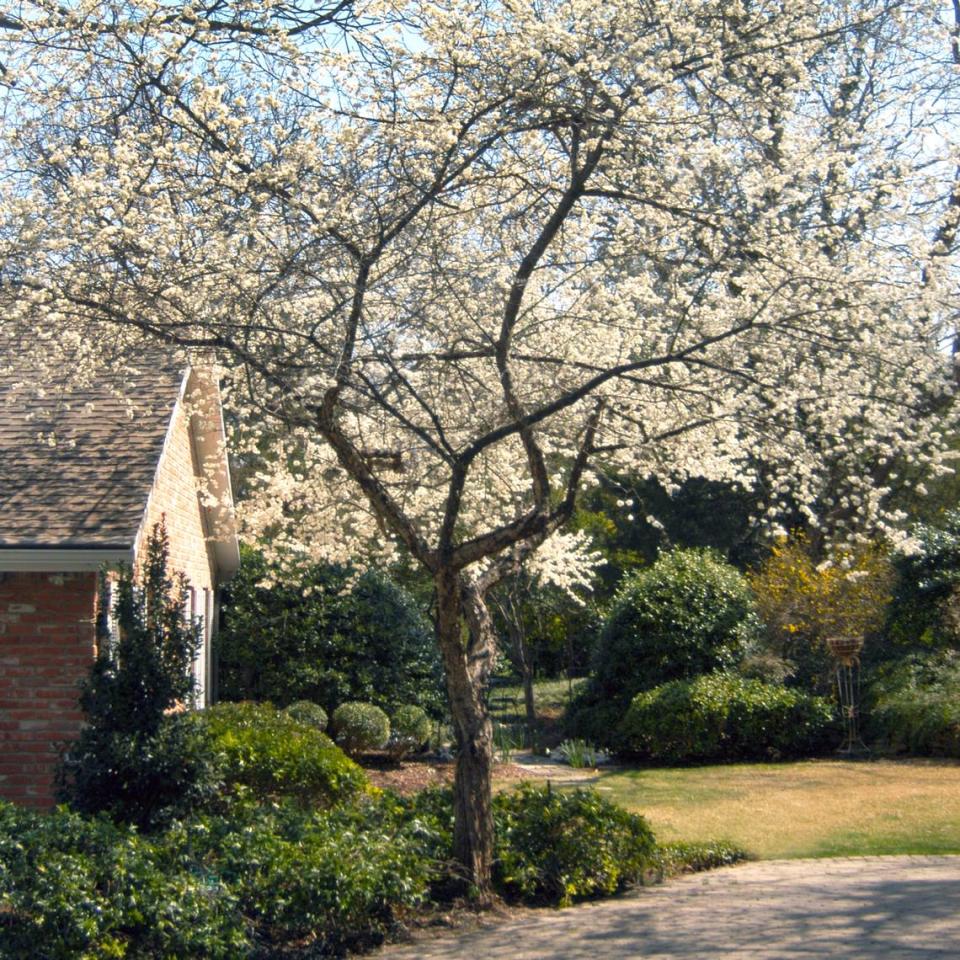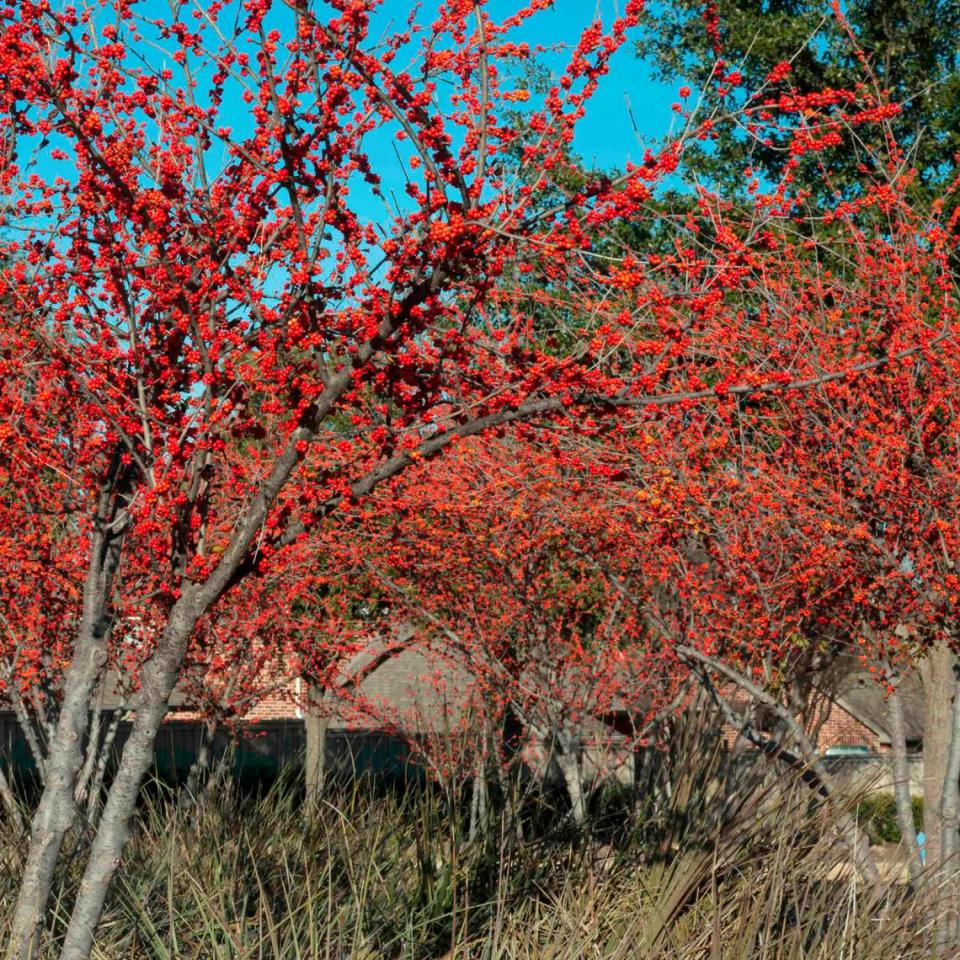Tight spaces demand tiny trees. Here are 10 for your North Texas landscape
The dinosaurs and I grew up when home lots were much larger. We thought nothing of planting live oaks and letting them spread as far as they wanted. Their 75-foot wingspans were no problem at all.
But in today’s much smaller urban environments we’re just asking for trouble if we (or our developer) plants huge species and expect us to maintain great gardens beneath them. But it happens.
Even in large rural landscapes there still will be spots where we want something smaller. It might be along a driveway, or perhaps in a courtyard. It could be for shade by a patio, or maybe it’s an “understory” tree that will do well in total shade of a tree that’s much larger.
For whatever the reason, there’s a real market for trees that stay small when they’re mature. Let me showcase 10 of the most outstanding ones along with details of how best you might put them to work at your place.

Ginkgo. Before I even describe this tree, I admit that it’s a much larger tree in the north than are the rest of the trees on my list. But in our area it will grow slowly to 30 feet tall. It has a distinctive growth habit with upward-facing branches and medium-green, fan-shaped leaves that turn beautiful gold in the fall. It’s all about the drama. Buy a grafted male (fruitless) selection so you won’t get any of the smelly fruit. I have three, all in part shade.
Panicled golden raintree. The more winter-hardy version of golden raintrees does very well in Texas. It’s rounded to 25 feet tall and wide. It covers itself with sprays of buttery yellow blooms late each spring. The flowers are followed by papery fruit that resemble Chinese lanterns. Fall color is frequently nice: reds, yellows and oranges. Full sun for best bloom.
Teddy Bear southern magnolia. If you like the stately look of this traditional tree of the South, but you need one that won’t grow more than 12 or 15 feet tall, you’ve found it. Same large leaves and beautiful, large white flowers, just on a very compact tree. To maintain its symmetry, it would be best in full sun.
Dwarf redbuds. One of our favorite spring-flowering trees, this one is well suited to alkaline soils. Now we have weeping types with green or purple foliage and others with brightly variegated leaves. These are great beneath large shade trees, and these compact types stay less than 15 to 18 feet tall.

Mexican plum. If you’re looking for a native small tree with fragrant white early spring blooms, colorful fruit in the fall, and boldly interesting bark, you’ve found your answer. It grows to 18 feet tall and wide, and it’s a winner. Full sun to light shade.
Japanese maples. When you ask most gardeners to name an “understory tree,” this group will probably be first on their list. They’re the darlings of horticulture right now, and with every good reason. They’re colorful, graceful, and virtually pest-free. (Unless you call our Texas sun a pest. They can’t handle it.) Plant them in a shaded spot that has highly organic planting soil and a constant level of soil moisture. Choose a variety with leaf form and color that’s pleasing to your eye. Let your nursery professional advise you, especially if you’re looking for a red-leafed selection. Some types hold their color longer into the summer than others.
Tree-form crape myrtle. There are more than 125 named varieties of crape myrtles. All are genetically shrubs, but we learned in my lifetime that the taller ones could be trained to grow tree-form by selecting three or five straight trunks and removing all the side shoots from the ground up to the lowest main branches. Now, that’s how almost all the tall varieties are used. They all need full sun. Mature heights range from 12 to 22 feet., depending on variety.
Tip: choose your crape myrtle variety carefully. The most common ones are not necessarily the best. And think about the surroundings before you decide on a color. What catches your eye at the garden center may not blend as well with the house and the rest of the landscape when you get home.
Warren’s Red possumhaw holly. We have native possumhaw hollies growing in open pastures around DFW. They become obvious in winter when they lose their leaves and their bright red berries show up. Warren’s Red was introduced by an old Oklahoma City nursery decades ago, and it is still the standard of excellence. Larger, redder berries and less suckering of new shoots. It grows to 15 feet tall and wide. Full sun to light shade.
Tree-form yaupon holly. Another native Texas plant, this one lines Interstate 45 on the way to Houston and all through Southeast Texas. It has small, spineless leaves on plants that grow to 15 to 20 feet tall and 12 to 15 feet wide. Only female plants bear the BB-sized bright red berries all winter. Buy one of the named female selections to be sure you’ll be getting berries.
Tree-form Nellie R. Stevens holly. This is the unsung hero of our bunch. It’s a large, dense shrub in its most usual form, but if it has a straight trunk (or trunks), it can be trained tree form, just as the other hollies and crape myrtles. It has stout trunks, large evergreen leaves, and huge red berries that will persist well into late spring. It’s a great corner accent of specimen tree to 20 feet tall and 15 feet wide. Sun or part shade.


